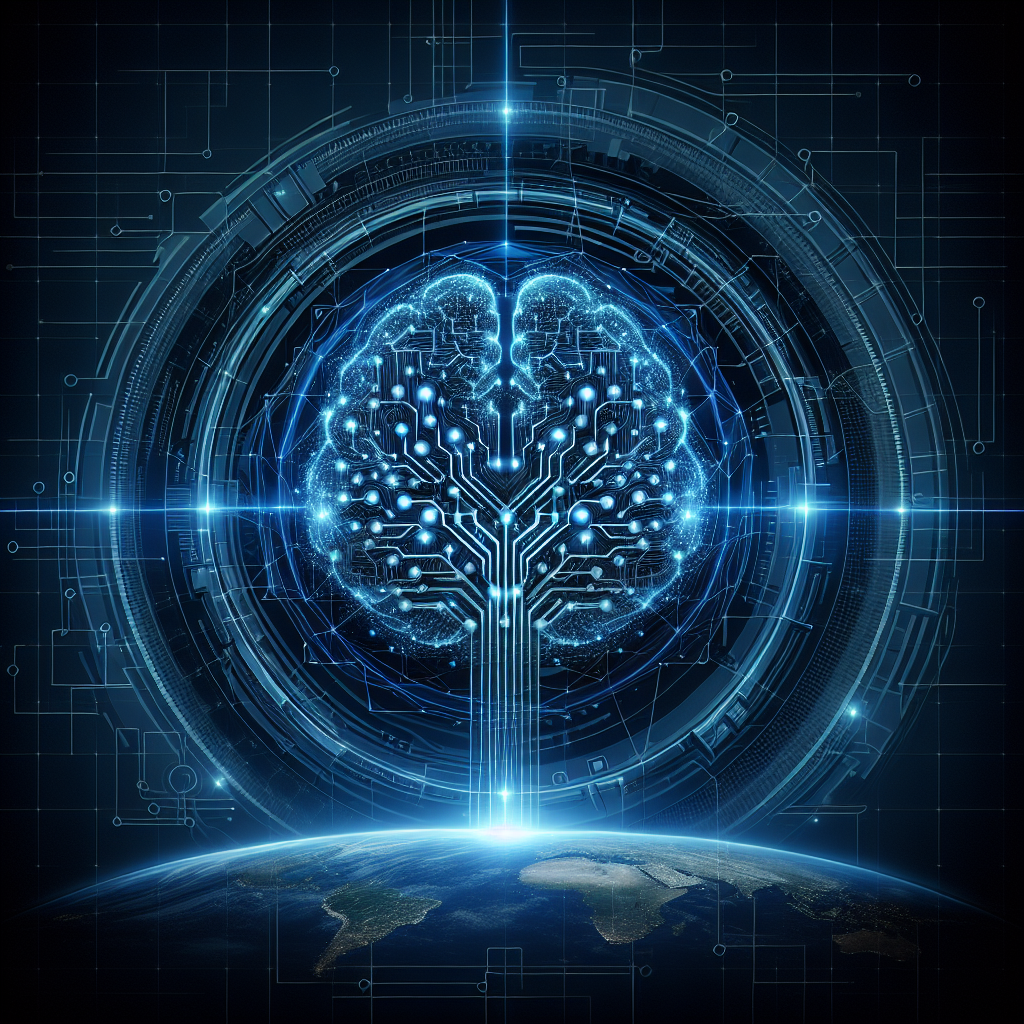The intersection of AI and cybersecurity: Charting new territories
In today’s rapidly evolving digital landscape, the threat of cyber attacks looms large, with hackers becoming increasingly sophisticated in their methods. As organizations strive to protect their networks and data, they are turning to artificial intelligence (AI) as a powerful tool in the fight against cybercrime. AI has the potential to revolutionize cybersecurity, offering new ways to detect and respond to threats in real-time. This intersection of AI and cybersecurity is charting new territories and reshaping the way organizations approach cyber defense.
AI in cybersecurity: A game-changer
AI is transforming cybersecurity by enabling organizations to detect and respond to threats at machine speed. Traditional cybersecurity measures often rely on rules-based systems that are reactive in nature, requiring human intervention to identify and mitigate potential threats. AI, on the other hand, can analyze vast amounts of data in real-time, detecting patterns and anomalies that may indicate a cyber attack. This proactive approach allows organizations to respond to threats before they can cause harm, reducing the risk of data breaches and other cyber incidents.
AI-powered cybersecurity solutions are capable of learning from past incidents and adapting to new threats, making them more effective at detecting and responding to evolving cyber threats. Machine learning algorithms can analyze data from multiple sources, such as network traffic, user behavior, and system logs, to identify potential security risks and anomalies. This holistic approach to cybersecurity enables organizations to build a more robust defense against cyber attacks.
AI can also automate routine security tasks, such as patch management and incident response, freeing up cybersecurity professionals to focus on more strategic initiatives. By automating repetitive tasks, AI can help organizations improve their overall security posture and reduce the risk of human error.
Challenges and considerations
While AI offers significant benefits in cybersecurity, there are also challenges and considerations that organizations must address. One of the main challenges is the potential for AI-powered systems to be manipulated by cybercriminals. Adversarial attacks, where hackers exploit vulnerabilities in AI algorithms to deceive or disrupt the system, are a growing concern in the cybersecurity community. Organizations must implement robust security measures to protect their AI systems from such attacks and ensure their reliability and accuracy.
Another challenge is the ethical implications of using AI in cybersecurity. As AI becomes more prevalent in cyber defense, organizations must consider the ethical implications of using autonomous systems to make decisions that may impact individuals’ privacy and security. Transparency and accountability are essential in AI-powered cybersecurity solutions to ensure that decisions are made in a fair and ethical manner.
Additionally, organizations must ensure that their AI systems are trained on diverse and representative data sets to avoid bias and discrimination. Biased algorithms can lead to unfair or discriminatory outcomes, potentially harming individuals or groups. Organizations must implement measures to mitigate bias in their AI systems and ensure that they are fair and equitable.
The future of AI in cybersecurity
As AI continues to advance, its role in cybersecurity is expected to grow. AI-powered cybersecurity solutions will become more sophisticated and capable of detecting and responding to a wide range of cyber threats. Machine learning algorithms will continue to evolve, enabling organizations to build more robust and adaptive defenses against cyber attacks.
AI will also play a crucial role in threat intelligence and information sharing, allowing organizations to collaborate and share data on emerging threats in real-time. By leveraging AI-driven threat intelligence platforms, organizations can stay ahead of cybercriminals and proactively defend against new and emerging threats.
Moreover, AI will enable organizations to automate threat hunting and incident response, reducing the time and resources required to detect and mitigate cyber attacks. By leveraging AI-powered security orchestration and automation platforms, organizations can streamline their security operations and respond to threats more effectively.
FAQs
Q: How does AI improve cybersecurity?
A: AI improves cybersecurity by enabling organizations to detect and respond to threats at machine speed. AI-powered systems can analyze vast amounts of data in real-time, detecting patterns and anomalies that may indicate a cyber attack. This proactive approach allows organizations to respond to threats before they can cause harm, reducing the risk of data breaches and other cyber incidents.
Q: What are the challenges of using AI in cybersecurity?
A: One of the main challenges of using AI in cybersecurity is the potential for AI-powered systems to be manipulated by cybercriminals. Adversarial attacks, where hackers exploit vulnerabilities in AI algorithms to deceive or disrupt the system, are a growing concern. Organizations must implement robust security measures to protect their AI systems from such attacks and ensure their reliability and accuracy.
Q: How can organizations address bias in AI-powered cybersecurity solutions?
A: Organizations can address bias in AI-powered cybersecurity solutions by ensuring that their AI systems are trained on diverse and representative data sets. Biased algorithms can lead to unfair or discriminatory outcomes, potentially harming individuals or groups. Organizations must implement measures to mitigate bias in their AI systems and ensure that they are fair and equitable.
Q: What is the future of AI in cybersecurity?
A: The future of AI in cybersecurity is expected to grow as AI continues to advance. AI-powered cybersecurity solutions will become more sophisticated and capable of detecting and responding to a wide range of cyber threats. Machine learning algorithms will evolve, enabling organizations to build more robust and adaptive defenses against cyber attacks. AI will also play a crucial role in threat intelligence and information sharing, allowing organizations to collaborate and share data on emerging threats in real-time.

